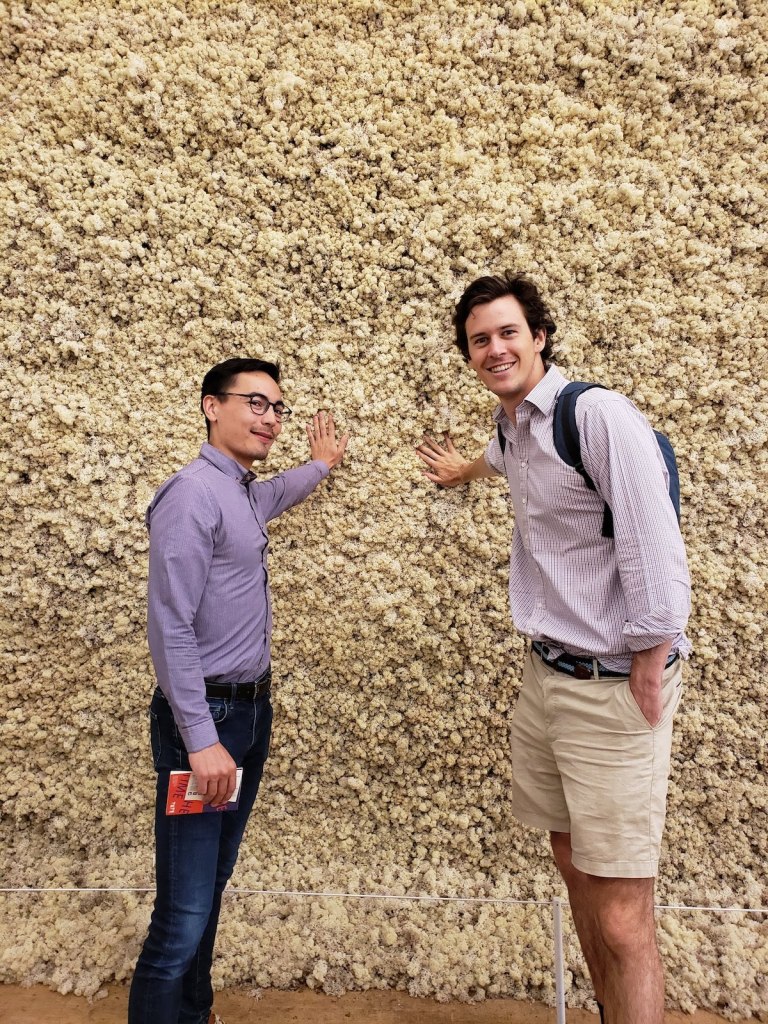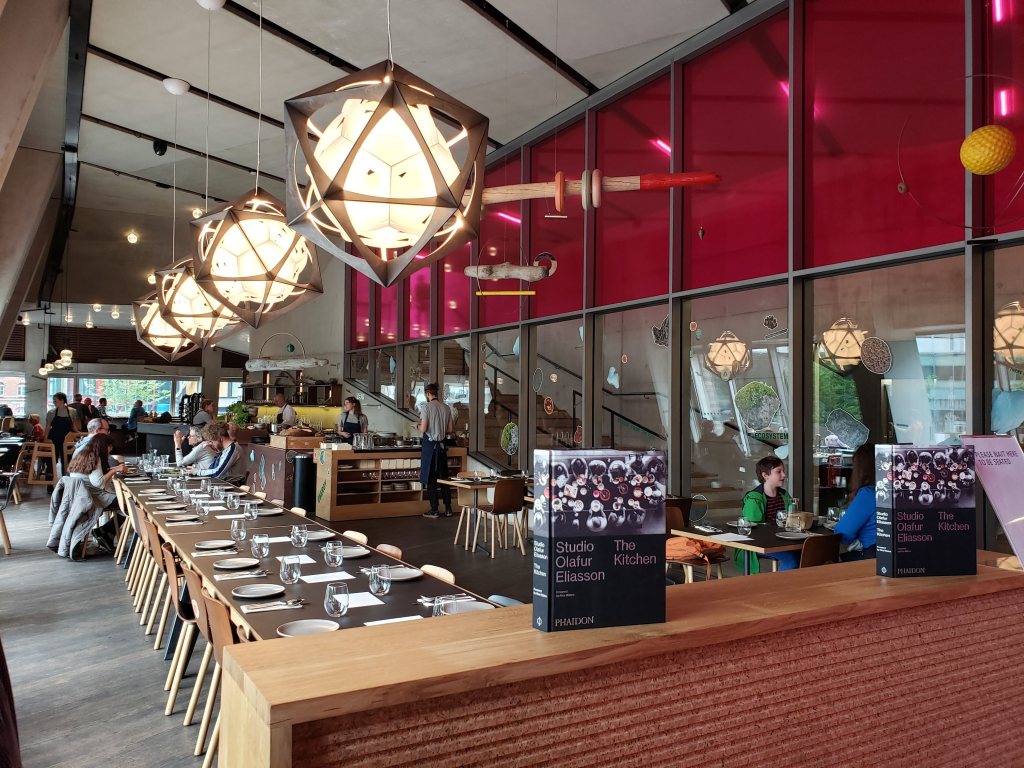Blog – Icelandic artist Olafur Eliasson lights up London’s Tate Modern

Olafur Eliasson’s show at London’s Tate Modern passes Iceland’s landscape through a glass prism, refracting it into a world of rainbows and ripples.
A couple of weeks ago, two friends and I visited London’s Tate Modern. Housed inside a decommissioned power station, the modern art museum sits solidly on the south bank of the River Thames. Since its opening in 2000, it has showcased some of the art world’s most compelling exhibits including those of Olafur Eliasson, the Danish-Icelandic artist who is arguably one of the North Atlantic island’s most famous cultural exports.
In 2003, Eliasson’s The Weather Project captivated over two million Tate visitors with its illusion of an orange sun rising through the museum’s mist-filled turbine hall. The installation of 200 low-sodium mono-frequency lights, which limit human vision to only yellow and black colors, created a sensation of being dropped into space on the edge of the sun’s fiery corona.
Last year, on the third anniversary of the Paris Agreement, 52-year old Eliasson’s Ice Watch 2018 brought 24 blocks of ice from Greenland to the Tate. The artist remarked of the exhibit, “Come touch the Greenland ice sheet and be touched by it. Let’s transform climate knowledge into climate action.”

His newest show at the Tate, In Real Life (now until January 5, 2020), is less grand in scale than The Weather Project and less of a call to action than Ice Watch. It instead immerses the viewer in a playful world of light and shadow with only a few direct reminders of climate change, such as photographs of an Icelandic glacier as it recedes over time.
In place of a giant sun and blocks of ice were rooms filled with pink, purple, and green lights that turned visitors into kaleidoscopic silhouettes, a mustard-yellow wall of moss, rippling tanks of water, giant fish-eye lenses, and geometric entanglements of copper wire. Together, these captured the many dimensions of Iceland’s geological idiosyncracies. In one darkened room, a thin curtain of mist fell directly down from the ceiling. It reminded me of Skógafoss, the popular waterfall on Iceland’s southern coast and one of the biggest in the country, which attracts tourists and photographers from around the world.

In another even more pitch-black room, visitors were funneled to walk around a flashing ring of neon lights. The erratic blasts caused temporary sensations of blindness and dysphoria – at least in me, as I felt like I was descending clumsily into one of the nine circles of hell. Most worrying was the feeling of a loss of proprioception, or knowing where your body is in space. Moving out of a well-lit gallery and into what might as well have been the bowels of Iceland’s most notorious volcano, Eyjafjallajökull, with only momentary flashes to guide the way, proved uncomfortably disorienting.

The exhibit, however, quickly managed to restore a sense of euphoria by inviting visitors to stroll across a rectangular room suffused with warm tones of orange and pink light. Strolling down the corridor felt like floating inside a pastel aurora – a ray of light in a land otherwise characterized by elemental shades of black and blue and white, of ice, snow, sea, and months of darkness.

If immersion in an optical orchestra isn’t enough, downstairs at the Tate, Eliasson has worked with the museum restaurant and Terrace Bar to design vegetarian tasting menus that mimic what he serves the 100 team members in his studio in Berlin each day. The menu makes use of local British ingredients rather than Nordic ones, featuring British cheese from Paxton and Whitfield and pulses and grains from Hodmedods, for instance.

Outside, a waterfall sculpture, the eleventh that Eliasson has installed around the world throughout his career, has been erected in front of the controversial Neo Bankside luxury flats, which opened in 2012 as part of the broader gentrification of the area following the Tate’s opening. These flats have attracted protestors who argue that they fail to live up to their promise to provide affordable housing.
In today’s world, technology often renders nature into a pixels and bytes. Yet the artificial waterfall, which tumbles off metal scaffolding in front of glassed-in fishbowl apartments, pushes in the opposite direction with its abstraction of nature by stripping it down to a steampunk skeleton of metal and glass.

The joys of In Real Life lie in its ability to cast into relief the softer side of Iceland along with its harder, darker edges. Over two million tourists now visit Iceland every year, with most leaving with photographs depicting some of the country’s most famed destinations – like Skógafoss and Eyjafjallajökull. If so many people have seen the real thing – as many as wandered through the Tate during Eliasson’s first show there – why bother seeing a minimalist, museum-version?
Ultimately, Eliasson’s show is worth a visit in order to appreciate how he manages to effectively pass the complex landscape through a glass prism. He refracts Iceland into a world of rainbows and ripples, allowing the onlooker to break down the whole and appreciate it for all its myriad, magical parts.
This post first appeared on Cryopolitics, an Arctic News and Analysis blog.
Related stories from around the North:
Canada: Canadian exhibition showcases miniature carvings by Inuit artists, Eye on the Arctic
Iceland: Arctic tourism in the age of Instagram, Eye on the Arctic special report
Norway: Emissions dropping in EU, but not in Norway, The Independent Barents Observer
Sweden: Sweden, Norway team up to preserve ancient rock carvings, Radio Sweden
United States: Art exhibit in Alaska connects bird research to backyards, Alaska Public Media




